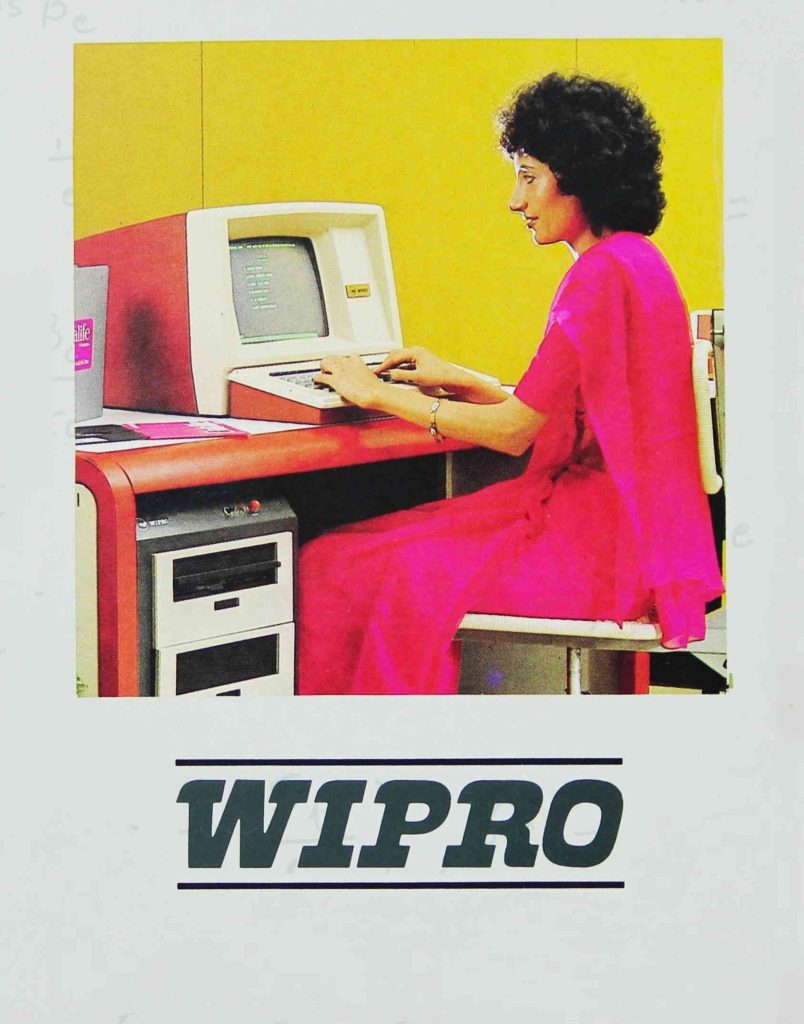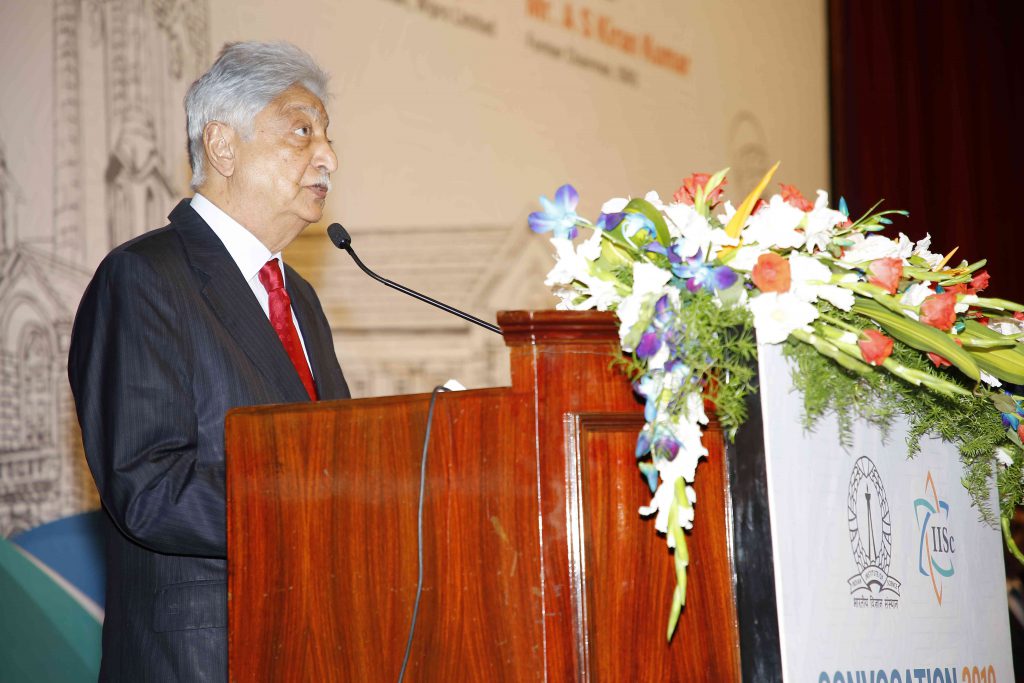IISc’s role in helping Wipro launch its minicomputers in 1981

As one of India’s leading technology companies, Wipro is today largely known for its Information Technology (IT), engineering, and consulting services. But what brought Wipro into the IT industry was its computer systems business in the 1980s. The origins of the company’s most flourishing business in the 1980s and 1990s can be traced back to IISc’s Digital Systems Lab at the School of Automation (now the Department of Computer Science and Automation or CSA).
“This really was the birth of our IT business – what is now the globally successful business by which Wipro is most known across the world. So, it would be quite accurate to say that the Wipro IT business was born in IISc,” said Azim H Premji, the Founder Chairman of Wipro Limited, while addressing those gathered at IISc’s convocation ceremony held in September 2019.
“It would be quite accurate to say that the Wipro IT business was born in IISc”
“Approaching IISc was a natural choice because they had the required expertise,” says Sridhar Mitta, who joined Wipro in 1980 as Research & Development manager. This collaboration helped Wipro launch their minicomputers in India in 1981. These computers were used primarily by the industry and the research community.
Before Wipro, IBM and other multinational companies (MNCs) were meeting the computing needs of Indian consumers. But in 1974, IBM found itself in a quandary when the Indian government passed the Foreign Exchange Regulation Act, capping the expansion of MNCs. The next three years were a trying time for many MNCs doing business in India. In 1977, the newly elected government under Morarji Desai began promoting indigenous industries, forcing IBM to exit operations.
There was also a change in how computers were developed all over the world. “From the expensive vertically integrated systems where computer vendors had to develop components – such as CPU, memory, and the operating system – by themselves, the world was moving towards more open and cheaper, horizontally integrated systems. Customers or vendors could buy, integrate sub-systems and peripherals from different vendors,” explains Mitta.
Following these developments intently in the late 1970s was Wipro, which was until then in the business of producing vegetable and refined oils. The company decided to fill the void in the computer systems business by cashing in on IISc’s expertise. IISc, around the same time, was keen on boosting collaboration with industry through its consultancy arm, the Centre for Scientific and Industrial Consultancy (CSIC).
To formalise the partnership, Wipro awarded a consultancy project to IISc through CSIC, by signing an agreement in July 1979. In a letter dated 5 October 1979, IISc’s Registrar wrote to Ashok Narasimhan, General Manager of Finance & Planning, Wipro, stating: “The Indian Institute of Science has undertaken a project for the design and development of microprocessor-based minicomputer systems for M/S Wipro Products Limited, Bombay. It is envisaged that the design and production knowhow would be transferred to M/S Wipro Products Limited, in another fifteen months. Preliminary work on the project has been carried out during the past four months.” The value of the consulting project was approximately Rs 14 lakh. The start-up named its business Wipro Information Technology Limited and became a subsidiary of Wipro Products Limited.
“The Institute constituted a committee to advise us on what computer we should make,” said Premji. “This consulting project involved surveying the literature on computers being made all over the world. And it was also a platform for technical discussions, conceptualisation, and design review between Wipro’s R&D team and IISc.”

NJ Rao, who was heading the Digital Systems lab at the time, had a strong foothold in a technology that was beginning to revolutionise the field of computers – microprocessors. Acting as the brain of the computer, these compact electronic circuits have become ubiquitous today, present in everything from computers and phones to cars and trains. Microprocessors replaced an older technology called vacuum tubes. Computers built using vacuum tubes were not suitable for widespread use due to their size. The first digital computer developed in 1946, ENIAC, used 18,000 vacuum tubes, and it stood 10 feet tall, weighed over 3 tonnes, and filled a 1,500-square-foot room. Machines that used vacuum tubes also required massive amounts of power and were prone to failure as the tubes burned out frequently. With the advent of microprocessors, computers could become smaller, faster, and more reliable. Given this changed scenario, Mitta says, the Indian government under Moraji Desai issued a directive asking Indian companies to develop minicomputers with microprocessors.
The Wipro team worked out of the Digital Systems Lab, setting the stage for close interactions between academia and industry
IISc had researchers with other expertise relevant to computers too, such as systems design, in both hardware and software. They worked at the Centre for Electronics Design and Technology (CEDT), an Indo-Swiss collaboration founded to make students industry-ready. The Centre offered practical courses in building microprocessor-based systems, recalls Y Narahari, who was a BE student at IISc at the time and is currently the Chair, Division of EECS, IISc. Two faculty members from CEDT, Serge Boada and HS Jamadagni, were already working on 16-bit microprocessors, which were much faster than 8-bit ones.
Minicomputers in-the-making
Wipro had another reason to look for support from IISc. According to Rao, in 1979, Intel released its Microprocessor Development System, a tool to help students and engineers familiarise themselves with its newly launched 8086 microprocessor and help develop microprocessor subsystems. “It would have been really difficult for a company to import the Intel Microprocessor Development System,” he says. “So IISc procured it. This was used by the CSA faculty and students, and the Wipro team.”
The Wipro team worked out of the Digital Systems Lab, setting the stage for close interactions between academia and industry. Several discussions, deliberations and experiments later, the team drew up plans for the architecture of its minicomputer: microprocessors, system buses that connect various components, operating system and computer housing. The consultancy project lasted for over a year, after which, the start-up, Wipro Information Technology Limited, shifted to its first office at 45, Dickenson Road, Bangalore.

In 1981, Wipro launched its first minicomputer named Wipro Series-86, which, according to Rao, was the best minicomputer architecture developed indigenously in India at that time. Powered by the Intel 8086 microprocessor and Intel Multibus, the operating system was licenced from the US-based Sentinel Computer Corporation. A CEDT team, headed by Kishore Babu, designed and built the computer housing.
With this, Wipro’s computer systems business took off in the Indian market. Their first-year revenue was Rs 2 crore, according to Mitta. “The chosen architecture proved to be so robust,” Rao adds, “that it served Wipro for the next three generations, with Series 286 and Series 386.”
This collaboration benefitted IISc as well. Narahari remembers that a member from the Digital Systems Lab named Victor Jayakaran was hired by Wipro as one of their first employees. “Out of the first few employees of Wipro, several were trained in this lab,” he says. “IISc students were given an opportunity to work for a start-up like Wipro.” Many IISc alumni joined Wipro during its first two years: Vallab Kulkarni, Srikant Seshadri, Anand Talwai, Anujan, Varma, and Ravi Bail. Narahari himself had been offered a position in Wipro in early 1982 but he chose to join the ME program in the School of Automation. And, as Premji observed, Wipro, with its 40-year-old association with IISc, continues to recruit from IISc and do “collaborative projects at the cutting edge of technology”.
More recently, IISc and Wipro have come together for a project titled Wipro-IISc Research Innovation Network
Though the project with IISc drew to a close, the collaboration continued over the years. More recently, IISc and Wipro have come together for a project titled Wipro-IISc Research Innovation Network (WIRIN). “It is a big programme, where teams from IISc and Wipro have started working on autonomous systems, artificial intelligence and robotics,” says Narahari. They will be working on building ‘driverless cars’ and India’s first indigenous ‘Metal 3D Printing Machine’, according to Premji. The project also includes funding PhD students and setting up of the Autonomous Systems and Robotics Lab at IISc. Wipro is funding this initiative in a major way, adds Narahari. “It’s a multi-year program, we have just completed one year.”
“We must encourage and foster collaboration across different sectors,” said Premji in his convocation address, “across education and research institutions, industry, civil society and government.”




